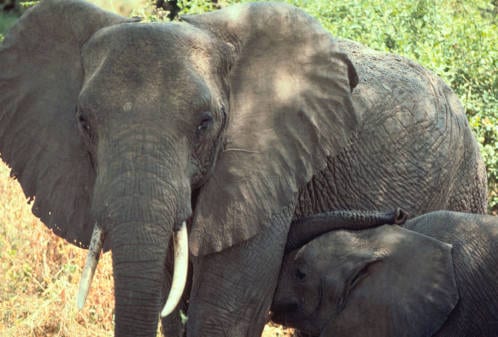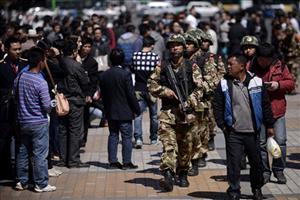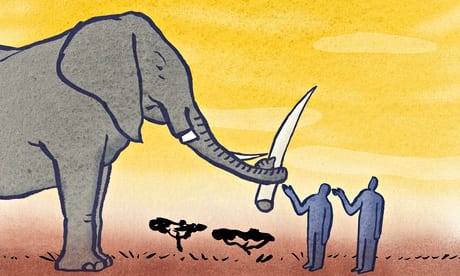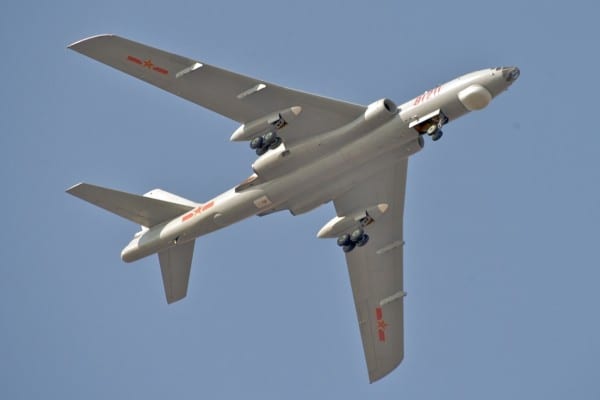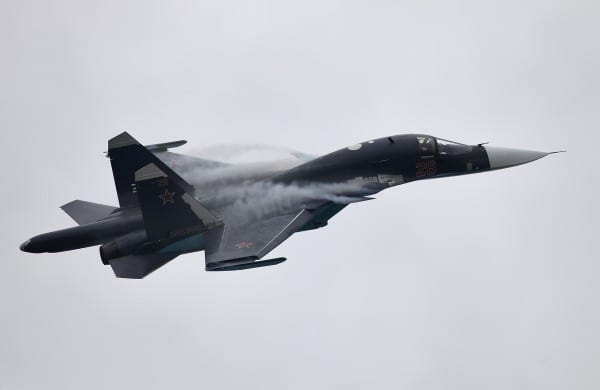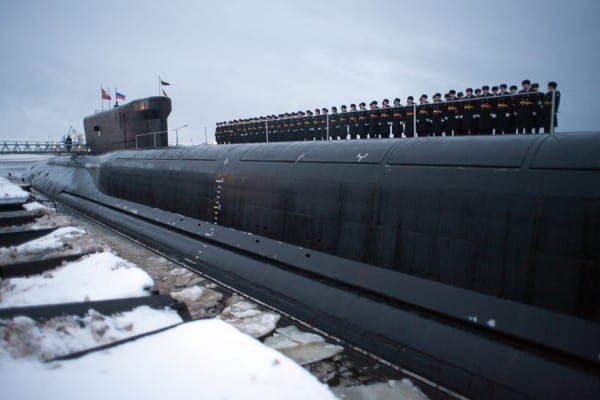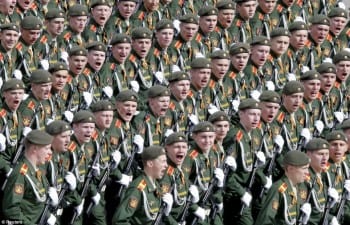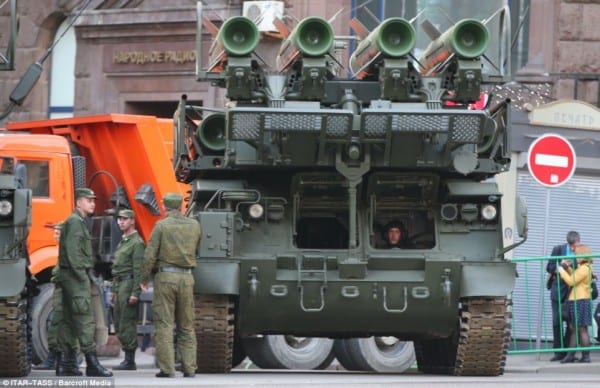The Strangelove effect – or how we are hoodwinked into accepting a new world war
JOHN PILGER
I watched Dr. Strangelove the other day. I have seen it perhaps a dozen times; it makes sense of senseless news. When Major T.J. ‘King’ Kong goes “toe to toe with the Rooskies” and flies his rogue B52 nuclear bomber to a target in Russia, it’s left to General ‘Buck’ Turgidson to reassure the President. Strike first, says the general, and “you got no more than 10 to 20 million killed, tops.”
President Merkin Muffley: “I will not go down in history as the greatest mass-murderer since Adolf Hitler.”
General Turgidson: “Perhaps it might be better, Mr. President, if you were more concerned with the American people than with your image in the history books.”
The genius of Stanley Kubrick’s film is that it accurately represents the cold war’s lunacy and dangers. Most of the characters are based on real people and real maniacs. There is no equivalent to Strangelove today, because popular culture is directed almost entirely at our interior lives, as if identity is the moral zeitgeist and true satire is redundant; yet the dangers are the same. The nuclear clock has remained at five minutes to midnight; the same false flags are hoisted above the same targets by the same “invisible government”, as Edward Bernays, the inventor of public relations, described modern propaganda.
In 1964, the year Strangelove was made, “the missile gap” was the false flag. In order to build more and bigger nuclear weapons and pursue an undeclared policy of domination, President John Kennedy approved the CIA’s propaganda that the Soviet Union was well ahead of the US in the production of Intercontinental Ballistic Missiles. This filled front pages as the “Russian threat”. In fact, the Americans were so far ahead in the production of ICBMs, the Russians never approached them. The cold war was based largely on this lie.
Since the collapse of the Soviet Union, the US has tightened the ring around Russia with military bases, nuclear warplanes and missiles as part of its “Nato Enlargement Project”. Reneging a US promise to Soviet President Mikhail Gorbachev in 1990 that Nato would not expand “one inch to the East”, Nato has all but taken over eastern Europe. In the former Soviet Caucuses, Nato’s military build-up is the most extensive since the second world war.
In February, the United States mounted one of its proxy “colour” coups against the elected government of Ukraine; the shock troops were fascists. For the first time since 1945, a pro-Nazi, openly anti-Semitic party controls key areas of state power in a European capital. No Western European leader has condemned this revival of fascism on the border of Russia. Some 30 million Russians died in the invasion of their country by Hitler’s Nazis, who were supported by the Ukrainian Insurgent Army, the UPA, responsible for numerous Jewish and Polish massacres. The UPA was the military wing, inspiring today’s Svoboda party.
Since Washington’s putsch in Kiev – and Moscow’s inevitable response in Russian Crimea, to protect its Black Sea Fleet – the provocation and isolation of Russia have been inverted in the news to the “Russian threat”. This is fossilised propaganda. The US Air Force general who runs Nato forces in Europe – General Breedlove, no less – claimed more than two weeks ago to have pictures showing 40,000 Russian troops “massing” on the border with Ukraine. So did Colin Powell claim to have pictures of weapons of mass destruction in Iraq. What is certain is that Obama’s rapacious, reckless coup in Ukraine has ignited a civil war and Vladimir Putin is being lured into a trap.
Following a 13-year rampage that began in stricken Afghanistan well after Osama bin Laden had fled, then destroyed Iraq beneath a false flag, then invented a “nuclear rogue” in Iran, dispatched Libya to a Hobbesian anarchy and backed jihadists in Syria, the US finally has a new cold war to supplement its worldwide campaign of murder and terror by drone.
A Nato Membership Action Plan or MAP – straight from the war room of Strangelove – is General Breedlove’s gift to the new dictatorship in Ukraine. “Rapid Trident” will put US troops on Ukraine’s Russian border and “Sea Breeze” will put US warships within sight of Russian ports. At the same time, Nato war games throughout eastern Europe are designed to intimidate Russia. Imagine the response if this madness was reversed and happened on America’s borders. Cue General ‘Buck’ Turgidson.
And there is China. On 24 April, President Obama will begin a tour of Asia to promote his “Pivot to China”. The aim is to convince his “allies” in the region, principally Japan, to re-arm and prepare for the eventual possibility of war with China. By 2020, almost two-thirds of all US naval forces in the world will be transferred to the Asia-Pacific area. This is the greatest military concentration in that vast region since the second world war.
In an arc extending from Australia to Japan, China will face US missiles and nuclear-armed bombers. A strategic naval base is being built on the Korean island of Jeju less than 400 miles from the Chinese metropolis of Shanghai and the industrial heartland of the only country whose economic power is likely to surpass that of the US. Obama’s “pivot” is designed to undermine China’s influence in its region. It is as if world war has begun by other means.
This is not a Strangelove fantasy. Obama’s defence secretary, Charles “Chuck” Hagel, was in Beijing last week to deliver a menacing warning that China, like Russia, could face isolation and war if it did not bow to US demands. He compared the annexation of Crimea with China’s complex territorial dispute with Japan over uninhabited islands in the East China Sea. “You cannot go around the world,” said Hagel with a straight face, “and violate the sovereignty of nations by force, coercion or intimidation”. As for America’s massive movement of naval forces and nuclear weapons to Asia, that is “a sign of the humanitarian assistance the US military can provide”.
Obama is currently seeking a greater budget for nuclear weapons than the historical peak during the cold war, the era of Strangelove. The United States is pursuing its longstanding ambition to dominate the Eurasian landmass, stretching from China to Europe: a “manifest destiny” made right by might.
This article first appeared in the Guardian, UK
Follow John Pilger on twitter @johnpilger

